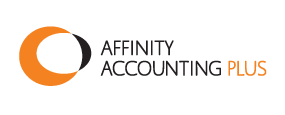Introduction
Since 2007 self-managed super-funds (SMSF’s) have been able to borrow for investment purposes to buy real property and other assets such as shares. There are a number of conditions applying which include:
- the loan must be used for the purchase of a single acquirable asset;
- the asset must be held in a bare trust or holding trust; and
- the loan must be limited recourse, meaning the security rights of the lender are limited to the SMSF’s geared asset.
In addition, any geared investment must provide for the member’s retirement and also be authorised by the fund’s trust deed and investment strategy.
The new view by the ATO is that:
- A related party could lend to their SMSF at an interest rate that was below the market rate of interest and perhaps interest-free; and
- The amount of discount provided by the related party to the SMSF is not treated as a contribution to the SMSF by the related party.
The other major benefit of lending to an SMSF is that the money is invested in a low tax environment because an SMSF only pays a maximum tax rate of 15% on its income (including capital gains) or 0% if the fund is paying a pension.
Loan from an associated entity of members of the SMSF
If a loan is made by an associated entity of the members of the SMSF instead of a third party financial institution care needs to be taken.
The ATO takes the view that paying interest in excess of a normal commercial rate is equivalent to withdrawing money from the fund. This is not allowed and therefore care should be taken not to pay a rate that exceeds a normal commercial rate.
Somewhat surprisingly, the ATO’s current view is that it has no concerns with loans that are at a lower than commercial rate.
Members making an interest free loan to the SMSF
Members are currently permitted to make an interest free loan to the fund to purchase the relevant asset without invoking the contribution limits. By way of example, a member of a fund will currently be limited to a contribution of $25,000 a year (deductible) and $150,000 a year un-deducted, with a capacity to bring forward three years at a time. This gives a member the ability to make a total contribution of $475,000 in any one year.
If a member wishes to purchase say a $1 million commercial property for the SMSF, the member could in fact choose to borrow 100% of the acquisition cost and make an interest free or minimal interest loan to the fund to purchase the property.
The net result will be that rather than the member paying tax at the member’s marginal tax rate, the tax will be 15% on income and 10% on capital gains whilst the fund is in accumulation phase and no tax at all will be payable in the pension phase.
Care needed
If a member, or an associated entity, provides a loan to the SMSF at a low or nil interest rate, the SMSF needs to show that it would still have undertaken the investment had it borrowed from an external party at normal commercial rates. Otherwise the ATO could deem the rental income to be “non arms-length income” and tax the fund at the highest marginal rate of 45% irrespective of whether the fund is in accumulation or pension phase.
Note that if the loan is to be provided by a related trust or company of the member, then Division 7A of the Income Tax Act needs to be complied with, otherwise the loan could be deemed a dividend to the SMSF.

